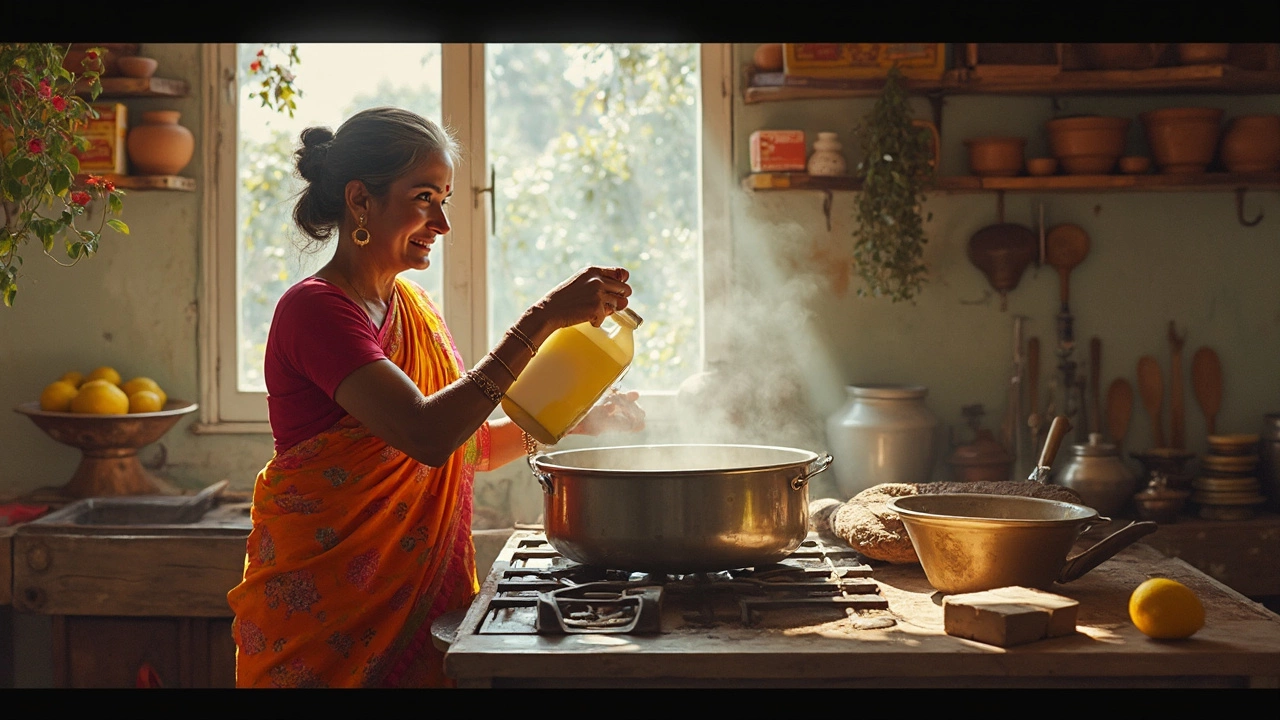Milk to Paneer Ratio: How Much Milk Do You Need for Perfect Paneer?
If you’ve ever tried making paneer at home, you know the biggest question is “how much milk should I start with?” The answer is simple: about 1 litre of full‑cream milk gives you roughly 100 grams of paneer. That’s the standard 10:1 milk‑to‑paneer weight ratio most Indian cooks rely on.
Why does this matter? Paneer that’s too watery feels cheap, while paneer that’s dry and crumbly is hard to shape. Getting the right ratio keeps the curd soft, milky, and easy to cut. It also saves you money because you won’t waste milk by over‑diluting the curd.
Why the Ratio Matters
Full‑cream milk contains about 3‑4 % fat and enough protein to coagulate when you add an acid like lemon juice or vinegar. If you use low‑fat milk, you’ll need a little more of it to reach the same yield because the proteins are less abundant. The classic 10:1 ratio assumes full‑fat milk; with skim milk the yield drops to about 70‑80 grams per litre.
Another thing to watch is the temperature. Heat the milk to a gentle boil (around 90‑95 °C). Going higher burns the milk and changes the flavor, which can affect the final texture. Once you see the foam forming, add the acid slowly while stirring.
Step‑by‑Step Ratio Guide
1. Measure your milk. Use a kitchen scale or a measuring cup. For beginners, start with 1 litre (4 cups) of full‑cream milk.
2. Heat it. Pour the milk into a heavy‑bottomed pot, whisk occasionally, and bring it to a rolling boil. Keep an eye on it – milk can spill over fast.
3. Add the acid. Mix 2 tablespoons of lemon juice or 1 tablespoon of white vinegar with a splash of water. Slowly pour the mixture into the boiling milk while stirring gently. You’ll see the curds separate from the whey almost instantly.
4. Let it sit. Turn off the heat and let the curd sit for 5 minutes. This gives the whey time to fully separate.
5. Strain. Line a colander with a clean cheesecloth or muslin. Pour the curd‑and‑whey mixture through it. Gather the corners of the cloth and squeeze out excess whey. The tighter you squeeze, the firmer the paneer will be.
6. Shape and chill. Tie the cloth into a bundle and place a heavy plate on top for 30 minutes. This press sets the paneer. Once firm, cut it into cubes or slices.
Remember the 10:1 rule as a quick cheat sheet: 1 litre milk → ~100 g paneer. Adjust the amount proportionally if you need more or less. For example, 2 litres of milk will give you about 200 g of paneer.
Common mistakes to avoid:
- Using low‑fat milk without adjusting the ratio – you’ll get less paneer.
- Adding too much acid – the curd becomes grainy.
- Rushing the pressing step – the paneer stays soft and may fall apart when cooked.
With the right milk‑to‑paneer ratio, you’ll get consistent results every time. Keep this guide handy, and you’ll be able to whip up fresh paneer for curries, grills, or salads in under an hour. Happy cooking!
How Much Paneer from 1 Gallon of Milk? A Real Kitchen Yield Guide
Ever wondered how much paneer you can actually get from a gallon of milk? This article breaks down the numbers and steps, so you’ll never over- or underestimate your homemade paneer yields again. Learn about the key factors that affect how much paneer you get, plus some pro tips to make your batch awesome. Find out how to make, store, and use that fresh paneer for the tastiest results. Real examples and kitchen-tested facts help you get the most out of every batch.
